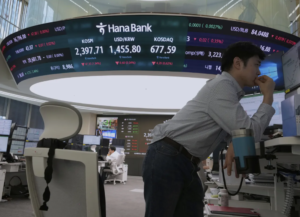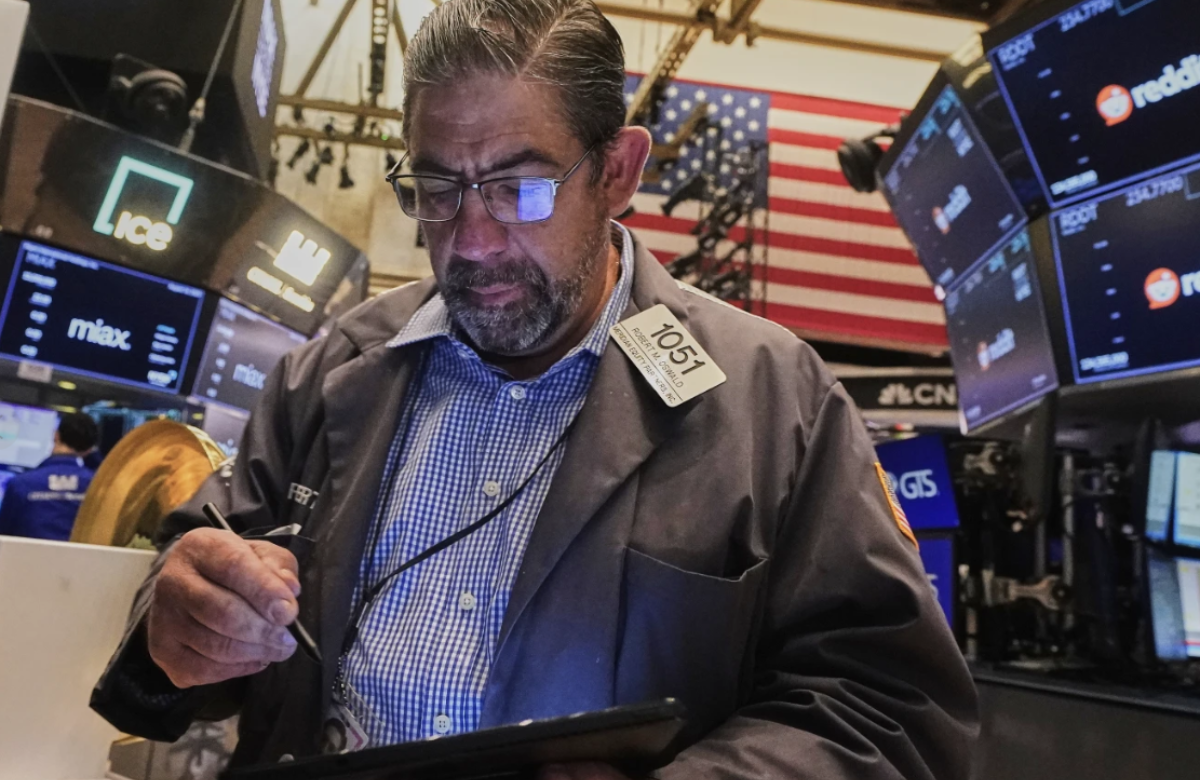Global markets showed signs of recovery on Tuesday, with U.S. futures advancing as investors responded to calming sentiments following President Donald Trump’s tariff announcements. In Tokyo, the Nikkei 225 surged over 6%, rebounding after a turbulent period triggered by trade tensions.
This modest recovery came after a volatile day on Wall Street, where stocks plummeted following Trump’s threats to escalate tariffs further. Early Tuesday, China’s Commerce Ministry vowed to “fight to the end” and hinted at unspecified countermeasures in response to Trump’s proposal of a 50% tariff on Chinese imports.
European markets also posted gains: Germany’s DAX rose 0.9% to 19,975.81, while France’s CAC 40 climbed 1.3% to 7,018.79. The UK’s FTSE 100 gained 1.3%, reaching 7,804.73.
In the U.S., futures for the S&P 500 jumped 1.5%, and the Dow Jones Industrial Average rose 1.9% early Tuesday. The Nikkei 225 closed at 33,012.58, marking a notable recovery.
Hong Kong’s Hang Seng Index also bounced back, though not to the extent needed to recover from the previous day’s 13.2% drop—the worst since the 1997 Asian financial crisis. It gained 1% to reach 20,036.03. The Shanghai Composite Index rose 1.4% to 3,140.15 after state-owned companies, backed by government investment funds, stepped in to support the market.
South Korea’s Kospi added 0.3% to 2,334.23, while Australia’s S&P/ASX 200 climbed 2.3% to 7,510.00. However, markets in Thailand and Indonesia faced sharp declines after holidays. Jakarta’s JSX index saw a brief trading halt after dropping more than 9%, settling down 7.6% by mid-afternoon. Thailand’s SET Index fell 4.2%.
Taiwan’s Taiex dropped 4%, primarily due to losses in Taiwan Semiconductor Manufacturing Corp. (TSMC), the world’s largest chipmaker, which saw its shares fall 3.8%.
On Monday, the S&P 500 fell 0.2% as investors anxiously awaited Trump’s next moves in the ongoing trade war. While the prospect of new trade deals could lead to tariff reductions and avoid a recession, prolonged tariffs might trigger deeper market declines.
The Dow dropped 0.9%, while the Nasdaq Composite gained 0.1%. Early in the day, all three indexes were sharply lower, but a false rumor about Trump considering a 90-day tariff pause temporarily lifted the markets. This hope was quickly dashed when the White House dismissed the claim as “fake news,” causing significant shifts in global investments.
Soon after, Trump reaffirmed his stance, suggesting he might increase tariffs further in response to China’s retaliatory measures.
Trump’s trade policies have challenged the globalization that has shaped the modern economy, lowering prices but also leading to offshoring of manufacturing jobs. His administration aims to bring factory jobs back to the U.S., a process that could take years, and to reduce trade deficits—though negotiations remain complex.
Despite the turbulence, hopes linger that diplomatic talks may prevent the full impact of the tariffs. The global financial strain was evident, with oil prices dropping below $60 per barrel for the first time since 2021 on Monday. Early Tuesday, U.S. crude oil was up 67 cents at $61.37 per barrel, while Brent crude rose 65 cents to $64.86.
In the currency markets, the U.S. dollar weakened against the Japanese yen, falling to 147.32 from 147.85. The euro dipped to $1.0982 from $1.0905.
Gold prices increased by $54 to around $3,028 per ounce, and Bitcoin gained 6.2% to approximately $79,400, recovering slightly after falling below $79,000 on Monday—down from its record high above $100,000 in January.














